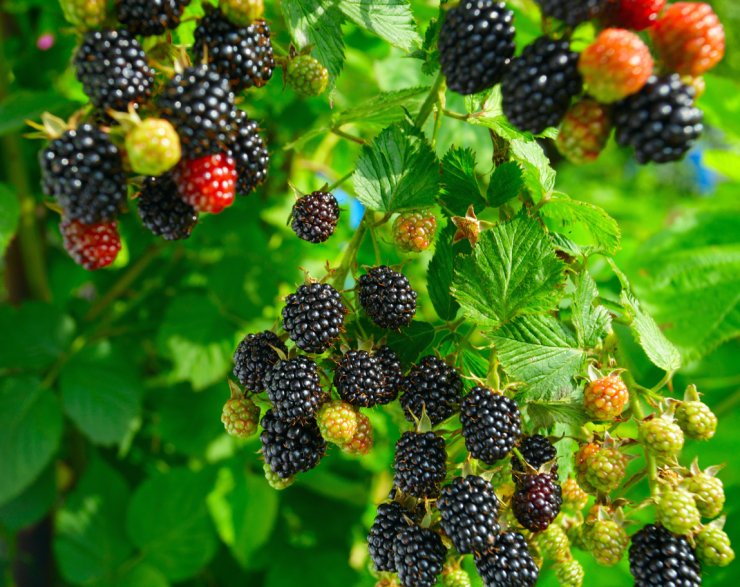
Blackberries ready for harvesting.
Expect fruit in the second year after planting, based on the biennial nature of blackberry plants, unless you have a primocane-blooming variety in which case you may get some fruit in the first fall after planting in spring. Primocane varieties will produce two crops every year after that, while ordinary varieties will produce one crop.
Blackberries in most of the U.S. are at their fruiting peak in July and August. In the Southern U.S., harvest time is usually spring to early summer. In the Pacific Northwest, fruiting time is late summer through the first frost.
Harvesting
It’s important that you only pick berries that are fully black, plump yet firm. Pick after they’ve lost their shine, which is when they’re at the peak of sweetness. They should pull freely from the plant without any real effort. Berries do not ripen after picking, so don’t get too anxious and pick early!
Once berries start to ripen, they must be picked fairly often, usually every couple of days. Put them in shallow containers to avoid crushing. Pick during the cooler parts of the day, keeping picked berries out of the sun to increase shelf-life. Note that in very warm climates, blackberries may turn red and become bitter if exposed to excessive sunlight.
Unlike raspberries, the central core of the berry will stay with the fruit when you pick it. Expect to keep picking blackberries at least twice a week for several weeks.
-
- Tip: Blackberries will stain your hands and clothing! Wear clothes that you don’t mind getting dirty.
Storing
Avoid handling berries too much. Put them in the refrigerator as soon as possible, and don’t wash them until you’re ready to use them. Blackberries have a longer shelf life than raspberries, about four to five days, but no more. If you can’t eat all your berries in that time, they can be stored by canning, preserving or freezing.
How often do you pick blackberries? Let us know if you’re able to keep up with the harvest!


 Previous
Previous

